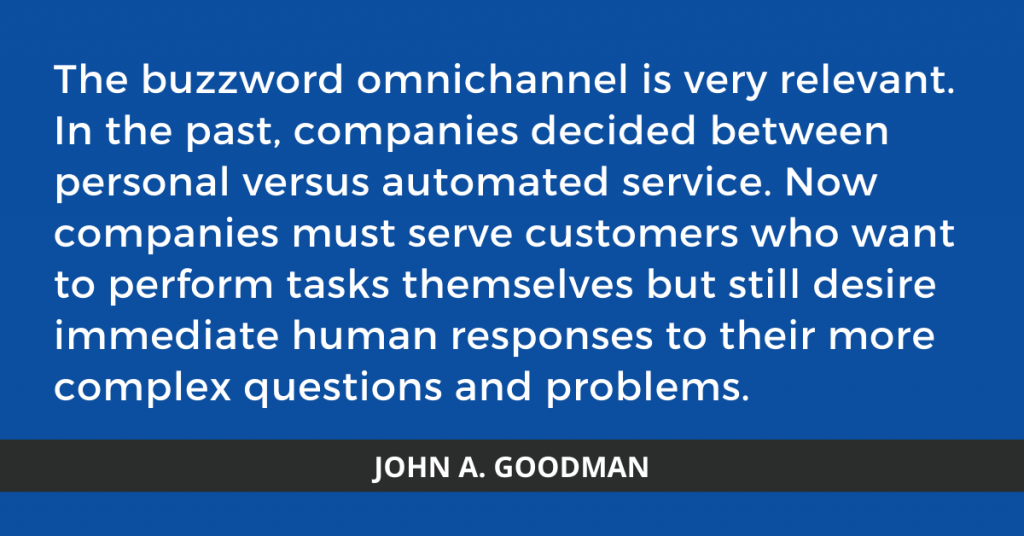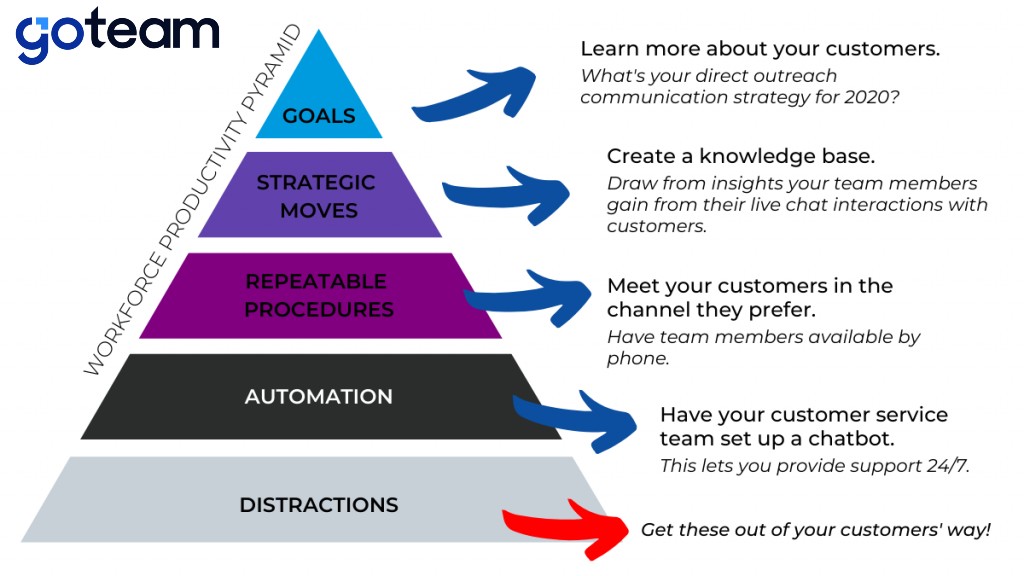It costs a lot less to help a customer solve a problem than to win a new customer.
The cost of winning a new customer “can be two to 20 times that of retaining an unhappy customer by resolving a problem and restoring the relationship,” wrote John Goodman in 2019. Those estimates will vary depending on the specific industry you’re in.
More than keeping costs down, there’s another compelling reason to help fix any issues your customer has encountered.
Think about the last time you were floored by how well a company answered a question you had or solved a complaint you had raised.
Remember how that made you feel about that company or perhaps specific individuals in that company?
Now think about the last time you had a problem with a product or service, but didn’t get much help at all.
Maybe you wanted some service charges adjusted or needed some guidance with troubleshooting. But all the company could be bothered to provide you were irrelevant answers from a chatbot or a busy phone signal. Remember how you felt then.
You wouldn’t want your customers to feel that way about your company, right?
“As an executive, you cannot personally deliver excellent service to all customers,” Goodman wrote in the updated edition of Strategic Customer Service, which HarperCollins Leadership published in 2019.
“You must depend on the staff and the overall culture created by the entire service team.”

You need your customer service or customer experience team to respond quickly and effectively to enquiries, then feed what information and insights they’ve gathered to your product development, marketing, and sales teams.
That’s one way you can keep customers happy and foster repeat sales.
And then you and key members of your team can gain the time and energy to reach out to customers and learn what other problems or process improvements you can help them with.
If you’re thinking about growing your business in 2020, may we suggest that you take another look at your customer service roles?
Here are four solutions to advance your customer support strategy in 2020:
Have your customer service team set up chatbot automation.
Automated conversation systems are still evolving. For every customer delighted with the convenience and fun of using a smart speaker like Amazon’s Alexa voice-activated service, there are others who may be frustrated when an automated text chat fails to answer their more specific questions.
But for service providers across a broad range of industries, chatbots are adding value by being available 24/7, supporting customers when they need assistance most.
Provide live chat support and create a knowledge base.
Ask your team to write articles for your knowledge base and keep on updating it. This will help everyone gain an in-depth understanding of your business, your industry, and your customers’ most urgent or most frequent concerns.
Customer interactions are a rich source of information and inspiration for the product and service delivery sides of your business.
Have team members available by phone.
Even with a chatbot and live chat support, some of your customers will still need or prefer phone support. Meet your customers in the channel they prefer.
Commit to a direct outreach communication strategy to learn more about your customers.
All three previous solutions make up the reactive side of customer service.
There’s a proactive side as well, which you can provide by committing to spend time with your clients to understand how their needs are changing—and how your product, service, marketing, and sales teams can help meet those needs.
Like many other areas of business, customer service continues to change.
The skills and services that our customer service virtual assistants provided more than five years ago, when go.team began operations, have since been expanded as more tools became available.
Apart from responding or reaching out to customers by phone and email, we’ve added chatbots and live chat support to our customer service toolbox. We can design, build, and maintain customer-centered websites and apps, as well as help SMEs interact with customers on social media.
Whether you’re a small to medium business or a large multinational firm, at https://go.team we can help you improve each customer’s outcome and experience, so your business can keep on earning their trust and loyalty.
If you’d like to know more about building or expanding your global team, reach out to us at sales@go.team.
We are GoTeam. Home of Your Global Office.
About GoTeam (formerly Go Virtual Assistants)
GoTeam, formerly GO Virtual Assistants (GO-VA) Inc. is a registered Australian-Filipino owned company growing in the heart of Cebu City, as well as a growing number of key cities in the Philippines.
Our HQ is situated in an IT complex with modern facilities, although since March 2020, more than 70% of our team members have been working from home.
Our enhanced operations and streamlined services provide scalable opportunities that spell sustainability, growth, and success for any business venture. As your global team members, GoTeam’s goal is to create winnable games and strategies across all the work that we do, knowing that your success is our long-term fulfillment.
We help Australian, NZ, US, and UK businesses increase revenue, reduce costs, and scale through outsourced offshoring. This also creates for us the opportunity to be a catalyst for people to exceed.
AU (+61) 2 7227 8809
US (+1) 302 207 2767
PH (+63) 32 410 7523
HK (+852) 302 203 9009
9th Flr, i1 Bldg, Jose Ma. del Mar St, IT Park,
Cebu City, Philippines 6000
Website: https://go.team
Careers: https://go.team/ph
Email: sales@go.team
Email: careers@go.team







